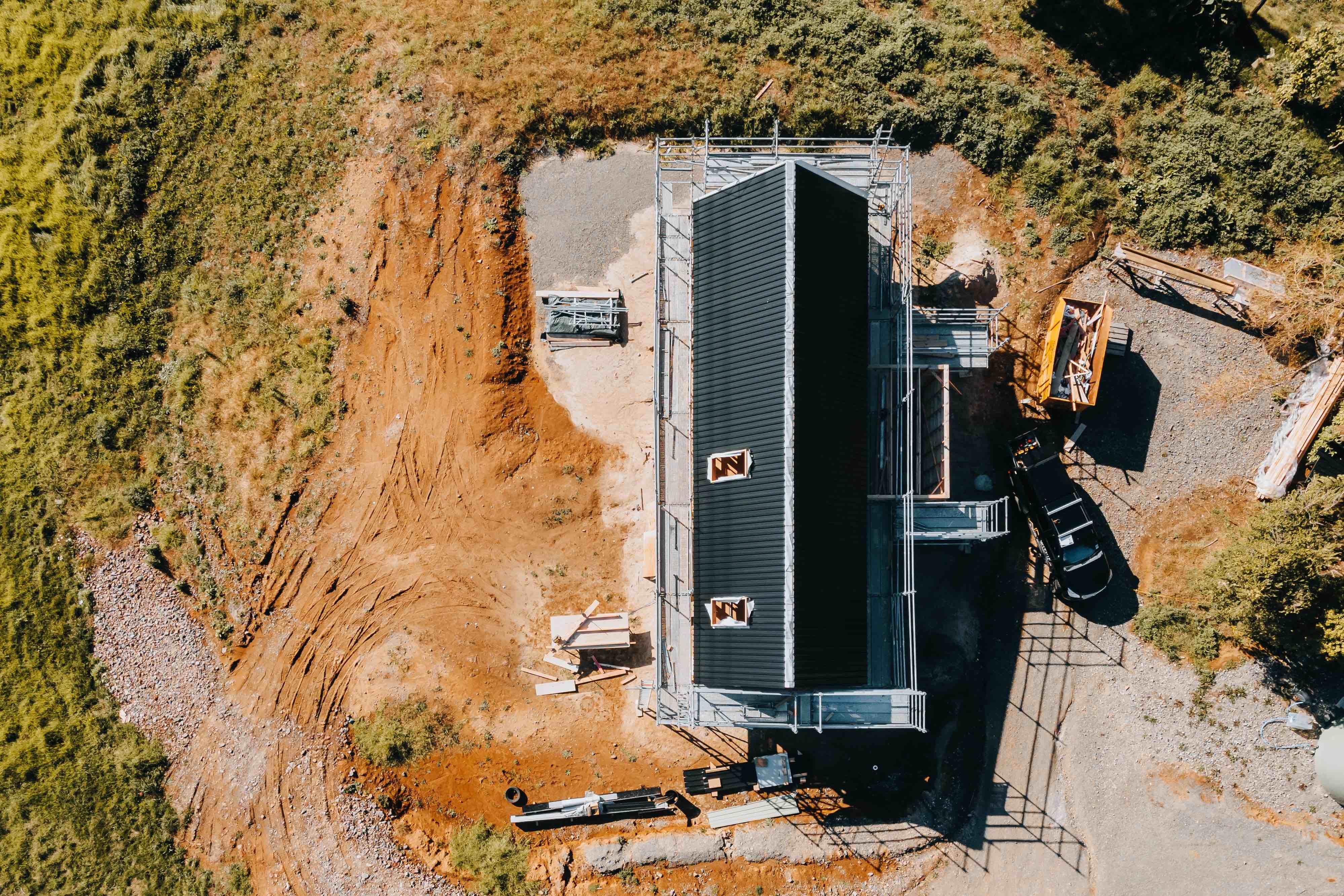Increased options for non-bank property finance
Date
29 August 2023
Share

Here at Finance New Zealand, we continue to see changes in the property finance landscape. We are seeing the main banks taking a more cautious approach when it comes to property secured lending. There are, however, a range of non-bank funding options available for segments of the market.
How does a non-bank lender differ from a main bank?
Non-bank lenders provide a wide range of property-backed loans. Their lending criteria are more flexible than those of main banks. People that don't fit into the traditional lending criteria of the main banks are more likely to receive support from them.
Most commonly, non-bank lenders fund short term loans to 24 months for a range of purposes. This includes:
- leveraging property security to support business funding,
- bridging loans to enable completion of asset sale & purchase,
- land-banking,
- funding of post development properties while being marketed for sale
- project based property development funding.
A comment from our lender panel - First Mortgage Trust
First Mortgage Trust is New Zealand’s largest non-bank lender of first mortgages. Since 1996, they have been providing first-mortgage secured funds to enable commercial, industrial, retail, residential and rural property investments and developments with low Loan to Value Ratios (LVR) throughout New Zealand.
In order to match your needs with the most suitable finance partner, Finance New Zealand works with a number of non-bank funding partners. One of our larger non-bank funding partners is First Mortgage Trust. The following is a snapshot of their observations about property finance lending today:
- Developer inability to access pre-sales for development / subdivision therefore requiring increased equity for comfortable end Loan to Value ratio (50%)
- Significant opportunity to fund residual stock loans once developers have completed projects and repaid Bank, allowing time for orderly sell down or retain as rentals.
- Previous exit strategies to revert to mainstream not coming to fruition due to tight bank Interest Cover Ratio (ICR) assessments. We note Banks are now looking to be dropping ICR & pre-sales covenants to allow them to selectively pick good quality transactions.
- Business Proft & Loss statements and Balance Sheets not strong from past 2 years trading necessitating loan rollovers, which we are receptive to, but it’s classed as a totally new funding arrangement.
- Developers that can produce the product seem to be selling it down well, with Bank’s appetite to fund completed property favoured.
- Significant transactions come across the desk, so there is the ability to be selective.
- Still favouring Tier 1 locations, defined as major centres with strong population growth, good employment prospects and solid Council infrastructure.
- Interest rates continue to increase. We are pricing at 9.5% + with 1-2% fees (+ Adviser) dependent on loan term. Line Fees of 1.2% applicable on development transactions.
- There is no interest in land banks without Resource Consent and confirmed exit, past couple of years has seen developers pay over market price with values now retracting and feasibility then not viable.
- Development projects still looking for 20% margin, good contingency (7.5%+), Quantity Surveyor involvement to confirm cost to complete drawdowns. With qualifying pre-sales maximum lend maybe 60% of the value On completion fund, without good pre-sales, likely maximum 50% end Loan to value necessitating increased equity.
- We continue to look at Commercial and Industrial builds, with future leasing up and refinance (or sale) being the takeout.
- Significant transactions turned aside due to quality of asset, location, inability to service interest (we usually only capitalise for development), high LVR, CCCFA (FMT is not involved with regulated CCCFA funding) no clear defined exit.
- Subdivisions are lengthy transactions, quite often with high underlying risk with consenting infrastructure works, below the ground risk, timeframe through to title and C$100k per site development (non complex) – when funders weigh up a transaction of this nature against a straight forward equity release and immediate full loan drawdown, unless there is significant equity in the transaction, then quicker, less complex deals are more likely favoured.
What’s happening in the property development space?
In the property development space, major banks' appetite remains conservative. The major banks are “cherry picking” what they deem to be low risk transactions. In bank speak, low risk typically means an experienced developer, a low Loan to Value ratio, high levels of pre-sales, and well documented processes that control cost escalation during the project. Some banks are more aggressive than others and may look at deals other banks have said no to. Bank appetite for high risk development-related funding remains low.
Is there competition in the non-bank sector?
We are seeing a change in the non-bank finance sector, which continues to expand. There are increasing numbers of non-bank lenders entering the market. Most of the growth is from private lenders using private capital, however there is also a range of mid-sized lenders supported by a mixture of their own bank funding lines, corporate equity funds, or depositor money. Non-bank lenders are increasing in number, size and capacity and are actively seeking lending opportunities. Finance New Zealand has close working relationships with a range of non-bank property finance lenders. We can help you place a request with a lender who will provide a solution but who we know has a positive reputation.
How does a bank differ from a non-bank lender in terms of costs?
From a pricing perspective non-bank lenders cost more than bank funding. Interest rates will carry a premium of 1-3% above main bank rates. Lender fees are typically between 1 – 3% of the transaction value. However, the cost of interest can be offset because funding is more readily available with faster response times and generally fewer conditions (such as valuations, QS etc.) These can add time delays to a project and increase costs. For development funding, - fewer pre-sales are usually required as well as less external input into the the project.
In addition, some of these lenders will provide “near prime” long term mortgage lending for consumer residential mortgage borrowers who fall just outside of the main bank appetite.
Non- bank lenders in the current landscape
What we have not seen re-enter the market in any major way, is the high Loan to Value ratio mezzanine lenders who were common prior to the Global Financial Crisis in 2008. Prior to the GFC, these lenders would sit behind the 1st mortgage lender, and provide lending that reduced the amount of equity the borrower needed to put into a project. In the current market, property-secured borrowers still need good levels of equity. Most non-bank lenders will go to a maximum Loan to Value ratio of between 50% to 70% depending on the size of the lending, the type and location of the property, and the strength of the borrower’s repayment strategy. The balance is typically owner equity either in cash or leveraged against other property security.
With property prices falling in recent times, we are also seeing increased activity from debtor finance lenders and a range of Fintech lenders providing business working capital lending to support trading companies.
These lenders can provide an alternative to traditional bank overdraft facilities, which in the small business space traditionally required the bank to hold 1st Registered Mortgage property security. Although debtor finance and fintech lenders charge higher interest rates than traditional bank lending, these lenders provide a much faster response, do not require the volume of information that main banks need to assess a lend, and do not require 1st mortgage property security. They will support businesses who are unable to obtain main bank financing and can help fund business growth.
Finance New Zealand's guide to non-bank lenders
We have established relationships with a range of non-bank lenders. We work closely with our property finance partners and know their criteria and appetite for funding. For example, some non-bank lenders prefer to lend in specific regions, some have an appetite for development funding whereas some prefer to fund equity release on properties.
Because we invest time getting to know your situation and because we have detailed knowledge of our funding partners' preferences, we can advocate your position to a lender who best suits your needs and with a lender who will likely provide you with a positive result and understand your long-term vision and goals.
No matter what your property finance request is, our experienced team will work on your behalf to source a competitive and flexible solution. To discuss your property finance solution, contact us today.
Similar Posts
07 February 2024
Business finance news: The finance sector regulatory environment
Many businesses will welcome a change in government to one seen as more business friendly. Within the financial sector we expect to see the following impacts in the short term:

07 February 2024
Business finance news: The domestic economy
Business confidence has improved since late 2023 but remains a mixed bag. This mirrors what we are seeing across our own business. As we have returned from summer holidays, there seems a more optimistic attitude within our client base.


Page Links
Contact us
Finance New Zealand Limited L11 BDO Tower, 19-21 Como Street, Takapuna, Auckland 0622 PO Box 65164, Mairangi Bay 0754 T: (09) 222 0320E: info@financenz.co.nzMember of


Proud Sponsors of Auckland Rescue Helicopter Trust
Copyright Finance New Zealand Ltd 2024



